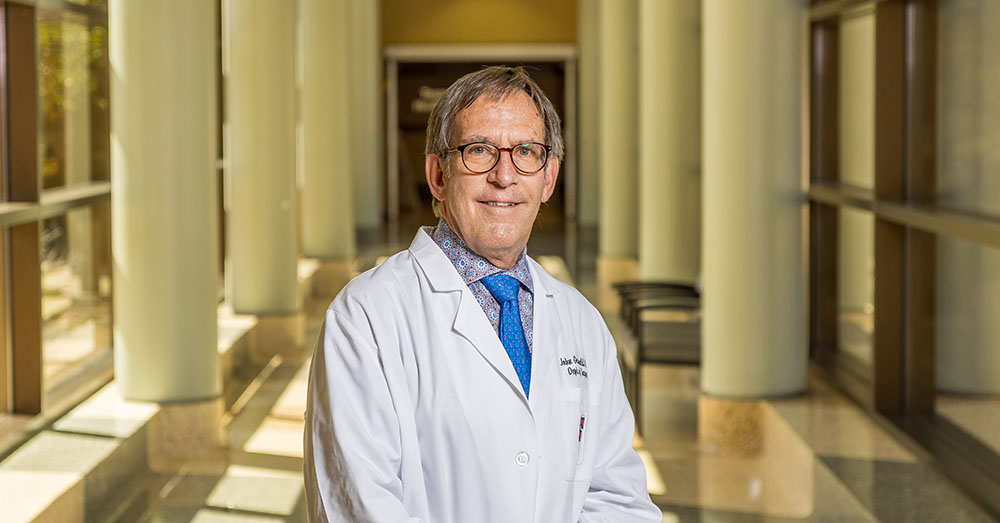Do you know TIME?
How to tell if you have sepsis

Your immune system usually works to fight any germs to prevent infection. If an infection does occur, your immune system will try to fight it, although you may need help with medication such as antibiotics or antivirals. Sometimes the immune system stops fighting the invaders and begins to turn on itself. This is the start of sepsis.
With September being Sepsis Awareness Month, how much do you know about the condition that can lead to life threating health issues? Sepsis is the body’s overwhelming and life-threatening response to infection that can lead to tissue damage, organ failure and death. In other words, it’s your body’s overactive and toxic response to an infection.
In 2017, one out of five deaths worldwide were due to sepsis. Sepsis is a leading cause of death and has been named as the most expensive in-patient cost in American hospitals. Americans pay an average of over $18,000 per hospital stay. With over 1.5 million sepsis hospital stays per year, costs are around $27 billion each year.
The condition kills more than 270,000 Americans each year, one death every 2 minutes and is the most common killer of children worldwide, causing 3.4 million deaths per year. In the U.S., someone is diagnosed with sepsis every 20 seconds.
There are many misconceptions about sepsis—you have to have a severe injury or burn
to get sepsis; only elderly or really ill people with certain diseases or ailments
can get sepsis. But the truth is one in five healthy people can get the condition.
Be aware that something as innocuous as an infection like strep throat, or a splinter
in the leg could ultimately turn into something that takes someone's life. Some people
may tell themselves “This probably won't happen to me because I'm pretty healthy.”
There is truth to some people being at higher risk of developing sepsis because they are at higher risk of contracting an infection. These include the very young, the very old, those with chronic illnesses and those with a weakened or impaired immune system—people with diabetes, burns and compromised immune systems. But a perfectly healthy adult or child who has untreated skin cuts or puncture wounds, strep throat, influenza, pneumonia and meningitis can quickly lead to sepsis if not treated.
Cuts or puncture wounds left unattended or non-treated infections under the skin can get into the fatty tissue and quickly multiply leading to sepsis. Directly under the skin is fatty tissue that has very little natural immunity needed to prevent infection.
The quicker physicians can make the diagnosis and start the treatment, the better chance the patient has. But for patients who have come to the hospital with severe sepsis, really high fever, low blood pressure, high heart rate, for those patients the critical time is four hours.
Watch for the following: Temperature, Infection, Mental decline, Extremely ill, also known as TIME, a sepsis watch suggested by the Sepsis Alliance. If you have a combination of these symptoms, it is urgent you seek medical care immediately.
Patients start off usually at home or at work or in some environment outside the hospital where they're getting sick. And depending upon how quickly they seek medical help, a lot of that four hours may be eaten up outside of the hospital.
The Centers for Disease Control and Prevention suggests the following to avoid sepsis:
- Prevent infections by taking care of chronic conditions and getting recommended vaccinations
- Practice good hygiene: wash your hands well and keep cuts clean and covered until healed
- Know the signs and symptoms of sepsis
- Act fast: Get medical care immediately and most importantly ask your health care professional, “Could this infection be leading to sepsis?”
The risk of dying from sepsis increases as much as 8% every hour treatment is delayed; more than 40 amputations are performed in U.S. hospitals each day. Half of sepsis survivors are left with long-term physical and psychological impairments. Be smart and know TIME.
John Griswold, M.D., is a Texas Tech Physicians surgeon, director for the Texas Tech University Health Sciences Center Clinical Research Institute and medical director of the University Medical Center Timothy J. Harnar Burn Center.
Related Stories
Celebrating Veterans: TTUHSC’s General Martin Clay’s Legacy of Service and Leadership
From his initial enlistment in the Army National Guard 36 years ago to his leadership in military and civilian health care management roles, Major General Martin Clay’s career has been shaped by adaptability, mission focus and service to others.
Texas Tech University Health Sciences Center School of Nursing Named Best Accelerated Bachelor of Science in Nursing Program in Texas
The TTUHSC School of Nursing Accelerated Bachelor of Science in Nursing (BSN) program has been ranked the No. 1 accelerated nursing program in Texas by RegisteredNursing.org.
TTUHSC Names New Regional Dean for the School of Nursing
Louise Rice, DNP, RN, has been named regional dean of the TTUHSC School of Nursing on the Amarillo campus.
Recent Stories
TTUHSC Cancer Researcher Honored by National Academy of Inventors
C. Patrick Reynolds, M.D., Ph.D., director of the School of Medicine Pediatric Cancer Research Center at TTUHSC, has dedicated his life as a researcher to developing treatments for childhood cancers.
TTUHSC School of Nursing Celebrates 10 Years of the Veteran to BSN Program
The TTUHSC School of Nursing recognized the 10-year anniversary of the Veteran to Bachelor of Science in Nursing (VBSN) program during the fall 2025 commencement ceremonies held Dec. 13 in Lubbock, Texas.
TTUHSC Dean to be Inducted into the National Academies of Practice as Distinguished Fellow
Gerard E. Carrino, Ph.D., MPH, dean of the TTUHSC Julia Jones Matthews School of Population and Public Health, will be inducted into the National Academies of Practice (NAP) as a Distinguished Fellow of the Public Health Academy.
